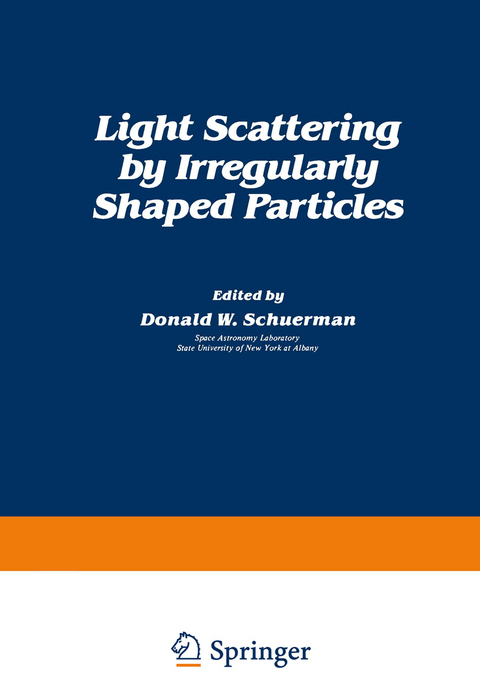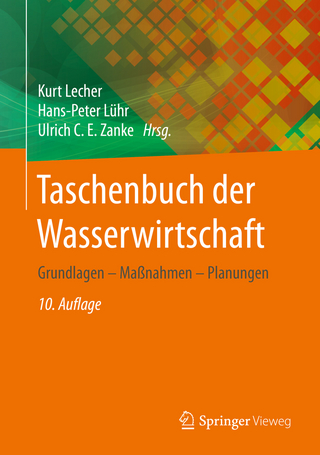
Light Scattering by Irregularly Shaped Particles
Springer-Verlag New York Inc.
978-1-4684-3706-5 (ISBN)
1: Introduction.- Some Remarks on Science, Scientists, and the Remote Sensing of Particulates.- Focusing in on Particle Shape.- 2: User Needs.- Sensing Ice Clouds from Satellites.- Lidar Visibility Measurements.- Non-Spherical Particle Scattering: Air Force Applications.- Particles Producing Strong Extinction in the Infrared.- 3: Specific Particle Descriptions.- Shape of Raindrops.- Atmospheric Ice Crystals.- Physical Properties of Atmospheric Particulates.- Some Characteristics of the Antarctic Aerosol.- Examples of Realistic Aerosol Particles Collected in a Cascade Impactor.- 4: Theoretical Methods.- Absorption by Small Regular Non-Spherical Particles in the Rayleigh Region.- Infrared Absorption Spectra of Non-Spherical Particles Treated in the Rayleigh-Ellipsoid Approximation.- Scattering by Non-Spherical Particles of Size Comparable to a Wavelength: A New Semi-Empirical Theory.- Scattering and Absorption by Wavelength Size Discs.- Perturbation Approach to Light Scattering by Non-Spherical Particles.- Exact Calculations of Scattering from Moderately-Nonspherical Tn-Particles: Comparisons with Equivalent Spheres.- Surface Waves in Light Scattering by Spherical and Non-Spherical Particles.- Shifrin’s Method Applied to Scattering by Tenuous Non-Spherical Particles.- Energy Conservation: A Test for Scattering Approximations.- Electromagnetic Scattering from Two Identical Pseudospheres.- Absorption by Particle Edges and Asperities.- On the Scattering from Arbitrarily Shaped Inhomogeneous Particles — Exact Solution.- Light Scattering by Hexagonal Columns and Plates.- Scattering of Radiation by a Large Particle with a Rough Surface.- 5: Experimental Methods.- The Microwave Analog Facility at SUNYA: Capabilities and Current Programs.- Observation of Light Scattering fromOriented Non-Spherical Particles Using Optical Levitation.- The Effect of an Electric Field on the Backscattered Radiance of a Single Water Droplet.- In-Situ Light Scattering Techniques for Determining Aerosol Size Distributions and Optical Constants.- Problems in Calibrating a Polar Nephelometer.- 6: Experimental Results.- Extinction Signatures of Non-Spherical/Non-Isotropic Particles.- Scattering by Particles of Non-Spherical Shape.- Phase Matrix Measurements for Electromagnetic Scattering by Sphere Aggregates.- Reflectivity of Single Micron Size Irregularly Shaped Dust Grains.- Biological Particles as Irregularly Shaped Scatterers.- 7: Inversion and Information Content.- Inference of Scatterer Size Distribution from Single Scattering Matrix Data.- Light Scattering by Irregularly Shaped Particles Versus Spheres: What Are Some of the Problems Presented in Remote Sensing of Atmospheric Aerosols?.- Participants.
| Zusatzinfo | X, 334 p. |
|---|---|
| Verlagsort | New York, NY |
| Sprache | englisch |
| Maße | 170 x 244 mm |
| Themenwelt | Naturwissenschaften ► Geowissenschaften ► Meteorologie / Klimatologie |
| Technik ► Maschinenbau | |
| ISBN-10 | 1-4684-3706-2 / 1468437062 |
| ISBN-13 | 978-1-4684-3706-5 / 9781468437065 |
| Zustand | Neuware |
| Informationen gemäß Produktsicherheitsverordnung (GPSR) | |
| Haben Sie eine Frage zum Produkt? |
aus dem Bereich


